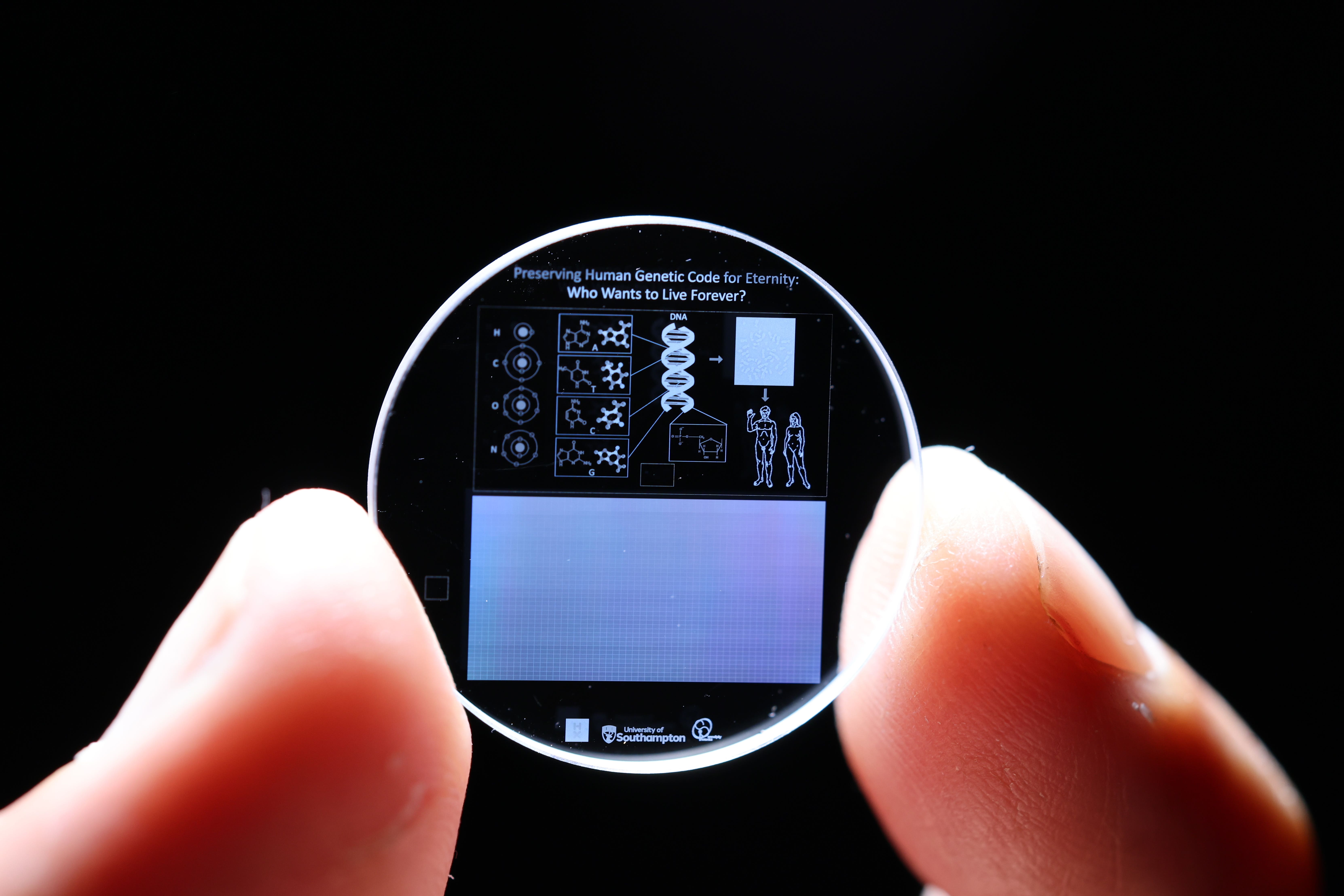Scientists store human genome on crystal which can last billions of years
The University of Southampton team hopes the data could be used to bring humans back from extinction in the future.

Scientists have stored the full human genome on a 5D memory crystal which they hope could provide a blueprint to bring humanity back from extinction thousands, if not millions, of years in the future.
The team from the University of Southampton’s Optoelectronics Research Centre (ORC) also said the revolutionary data storage format that can survive for billions of years can be used to record the genomes of endangered plant and animal species that are faced with extinction.
A university spokesman explained that unlike other data storage formats that degrade over time, 5D memory crystals can store up to 360 terabytes of information (in the largest size) without loss for billions of years, even at high temperatures.
It was awarded the Guinness World Record for the most durable data storage material in 2014.
The visual key inscribed on the crystal gives the finder knowledge of what data is stored inside and how it could be used
The spokesman said: “The crystal is equivalent to fused quartz, one of the most chemically and thermally durable materials on Earth.
“It can withstand the high and low extremes of freezing, fire and temperatures of up to 1,000C. The crystal can also withstand direct impact force of up to 10 ton per cm2 and is unchanged by long exposure to cosmic radiation.”
The team at Southampton, led by Professor Peter Kazansky, used ultra-fast lasers to precisely inscribe data into nano-structured voids orientated within silica – with feature sizes as small as 20 nanometres.
The spokesman said: “Unlike marking only on the surface of a 2D piece of paper or magnetic tape, this method of encoding uses two optical dimensions and three spatial co-ordinates to write throughout the material – hence the ‘5D’ in its name.”
Prof Kazansky said that although it is not currently possible to synthetically create humans, plants and animals using genetic information alone, the longevity of the 5D crystal meant the information would be available if these advances were ever made.
He pointed to the creation of a synthetic bacterium by Dr Craig Venter’s team in 2010.
Prof Kazansky said: “We know from the work of others that genetic material of simple organisms can be synthesised and used in an existing cell to create a viable living specimen in a lab.
“The 5D memory crystal opens up possibilities for other researchers to build an everlasting repository of genomic information from which complex organisms like plants and animals might be restored should science in the future allow.”
The crystal has been stored in the Memory of Mankind archive – a special time capsule within a salt cave in Hallstatt, Austria.
The university spokesman added: “When designing the crystal, the team considered if the data held within it might be retrieved by an intelligence (species or machine) which comes after us in the distant future. Indeed, it might be found so far into the future that no frame of reference exists.”
The key shows the universal elements (hydrogen, oxygen, carbon and nitrogen); the four bases of the DNA molecule (adenine, cytosine, guanine and thymine) with their molecular structure; their placement in the double helix structure of DNA; and how genes position into a chromosome, which can then be inserted into a cell.
Prof Kazansky explained: “The visual key inscribed on the crystal gives the finder knowledge of what data is stored inside and how it could be used.”